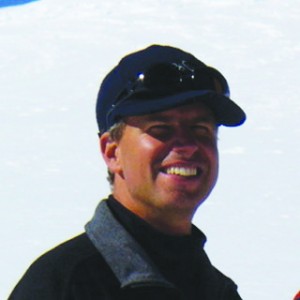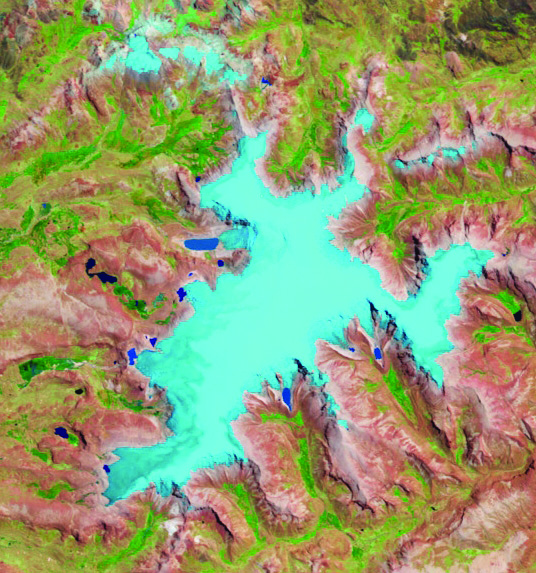What mysteries of the past lie hidden in layers of glacial ice? Surprises regarding pollution, as it turns out. Colin Cooke, a former postdoctoral associate in the geology and geophysics department at Yale, in collaboration with colleagues from Ohio State University and the University of Copenhagen, has conducted analysis on ice cores to uncover the history of atmospheric pollution in South America.
In a February 2015 article in the Proceedings of the National Academy of Sciences, Cooke’s team published the results of a project that studied toxic trace metal deposits in an ice core recovered from the Quelccaya Ice Cap in the Peruvian Andes. Ice cores are long tubes of ice drilled out from ice sheets, and a unique feature is that they preserve the atmospheric composition every year for hundreds of thousands of years. By examining the composition of an ice core from 793-1989 CE, Cooke’s group found that Spanish mining and metallurgy in the 1500s caused significant pollution in the South American atmosphere prior to the Industrial Revolution. We tend to conceptualize pollution as a modern problem, fueled by the growth of industry, but this research shows that humans have been polluting the air surrounding them for much longer than we thought.
Archaeologists know that the Incas mined gold and silver before Spanish colonialism, a fact which scientists often emphasize in discussions of pre-industrialization South American mining. However, Cooke and his fellow researcher Paolo Gabrielli from Ohio State showed that pollution on a large scale did not occur until the colonial period, when the Spanish brought new mining methods to Peru and Bolivia. These improved methods, such as mercury amalgamation, were more effective than Incan mining methods such as lead-based smelting. This caused a spike in mining activity in the 1500s, leading to a rapid accumulation of toxic trace metals in the atmosphere.
Cooke and Gabrielli were surprised by the geographic expanse and environmental impact of the Spanish mining exploits in South America, which took place about 240 years before the Industrial Revolution. They were not expecting pre-industrialization to have so strongly contributed to heavy metal atmospheric pollution. However, Gabrielli noted that the pre-industrialization pollution is still several factors lower than the unprecedented level of pollution that occurred following the onset of the Industrial Revolution.
Climatologists usually use ice cap cores to study carbon dioxide rather than heavy metals. Thus, in designing this study, Cooke relied on Gabrielli’s expertise as a polar researcher and as a specialist in examining metals in ice cores.
Cooke had previously done research on pollution in South America with sediment cores from the bottom of lakes, but ice cores yield more precise data. “The ice cap gives a clear window into the atmosphere,” he said. “A lake core gets sediment from the lake itself, so we are never sure if the changes are only from the atmosphere or also from runoff going into the water.” The ice cap avoids this problem because it preserves the atmospheric changes through layers of compressed snow which form a visible band of ice for every year. The Quelccaya Ice Cap is remote enough from mining sites that it only records widespread continental atmospheric pollution.
Despite the many advantages of ice cores, conducting a study across continents and with such fragile samples posed many challenges. Arranging logistics to move six tons of equipment from Ohio State University to the Quelccaya Ice Cap and back was difficult, to say the least. Since helicopters cannot function at such high altitudes, scientists had to transport the ice caps using porters who travelled up and down the mountain. The high probability of surface contamination during that journey necessitated that the samples be washed with ultrapure water when they arrived at the lab, a process that removed about 50 percent of each sample.

Part of this study compared the ice core data from the Quelccaya Ice Cap with earlier research done on an ice core in Antarctica thought to show hemispherical pollution. Gabrielli will expand these comparisons in the future via several programs that he runs around the world. He is currently working on extracting and examining ice cores from the Himalayas, the Tibetan plateau, and the Alps. By examining these samples, he intends to reconstruct how different civilizations influenced the history of atmospheric pollution.
Cooke and Gabrielli’s findings have opened new possibilities for understanding the actions of older civilizations. “It’s really remarkable,” Cooke said. “We are going back in time when we don’t have written records of what people were doing and their impact on the environment.”
Cover Image: Researchers took an ice core sample from this Quelccaya Ice Cap in the Peruvian Andes, more than 5,600 meters in elevation. Image courtesy of Wikimedia Commons.

